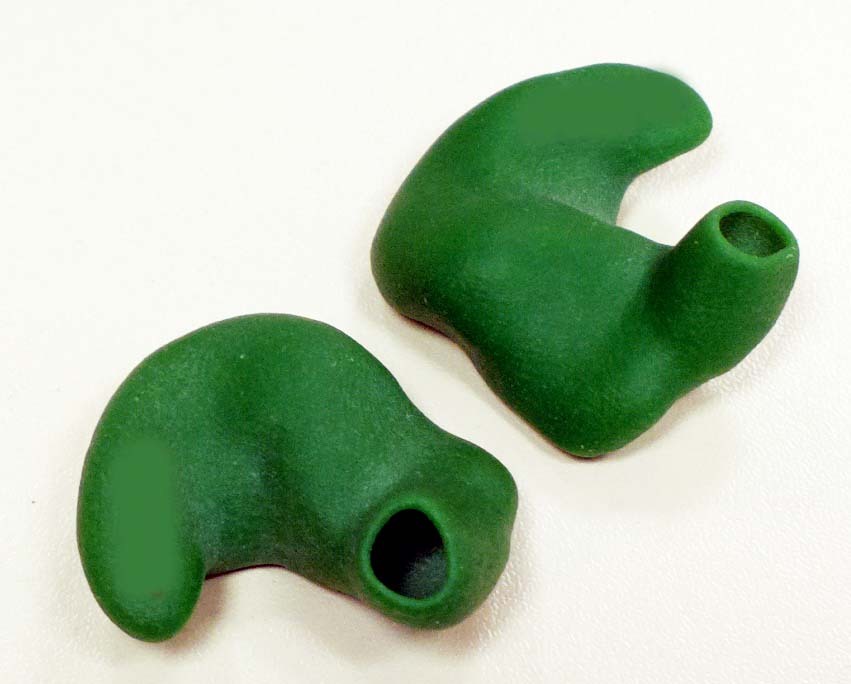If I figure out a good way to combine it with a microphone, I will give it a try.
Wear them under a normal aviation headset, use the mic of the aviation headset but plug the in-ear earphones into the intercom. What makes this easier is it's the mic that has the funny sized jack, the earphone part is a 1/4in jack and easy to get hold of.
Wear them under a normal aviation headset, use the mic of the aviation headset but plug the in-ear earphones into the intercom.
Doesn't that somewhat detract from the whole idea of lightweight comfortable earplugs instead of a big heavy headset?
Doesn't that somewhat detract from the whole idea of lightweight comfortable earplugs instead of a big heavy headset?
 You're just jealous because alioth came to this idea before you.
You're just jealous because alioth came to this idea before you.
Doesn't that somewhat detract from the whole idea of lightweight comfortable earplugs instead of a big heavy headset?
Maybe, but it's fine to test out how well they work with GA radios and intercoms. It also gives a point of comparison with standard ANR headsets (which have good passive noise reduction of a standard headset + the ANR feature) for a price far below the Bose ANR aviation headsets. I suspect in-ear headphones have very little passive noise reduction.
You're just jealous because alioth came to this idea before you.
Ha yes. But I have the next iteration. We could build the ANR INTO a normal passive headset!
If this were really able to go anywhere, then Bose would suffer a $300 product eating into the market for their $1000 product.
If anyone actually manages to wire up a mic to work with these, then I'll be impressed and would be interested of the result.
Part of the problem seems to be that it is practically impossible to get hold of the strangely-sized GA mic plug through normal electronics component supply chains. You can of course get them as part of 'replacement cables' for DC-style headsets, but then you're paying way over the odds for the component you really want.
One way to get the jack plug(s) is to buy some headset converter - example. There are much cheaper gizmos out there from which you could cut off the plug.
The mike has to be a proper noise cancelling mike otherwise it will be completely useless.
I have some of the wiring here (doesn't time fly?) but I never actually wired up a mike.
On a tangent, that adapter above is one reason why the A20 is much better than the old X headset. The A20 has a battery pack so if you buy the aircraft-power-plug version, you can still use it in a "normal" plane, with the above adapter. The X however cannot be thus used (it contains no battery pack) and needs the adaptor whose schematic I have at the above link, which contains a power supply. This is also quite relevant if you have a handheld radio; a Lemo-plug X cannot be used with it but a Lemo-plug A20 can (with the above £60 cable). The cable is about $50 in the USA, BTW...
Another way to get the microphone plug is to order it from your local pilot shop
remembering the near-misses in my life: the pilots were all wearing sunglasses ...
An interesting new in-ear headset (Phonak)
I saw this last week
Years ago I bought the Lightspeed Mach 1, which looked promising and worked well – except that it took a small movement for it to move in the ear (it would partly come out) and a lot of noise would suddenly come in, usually in the middle of an ATC call… I managed to sell it quickly on US Ebay for a good price. They stopped making it soon afterwards. The mike on it was superb, however – much better than the mike on anything else including the Bose A20.
This one solves that problem by using special inserts which you separately insert inside your ear. They are custom made for you

I took the above pic, and photoshopped out the owner’s initials which the maker engraves on them.
These stay in well, apparently, and the headset’s earpieces then clip into that. What isn’t visible in the pic is the hole on the other side of it where the headset “speakers” clip in.
Without a test flight (which can’t really be done without getting the custom inserts made) there isn’t more one can say, but the idea looks good.